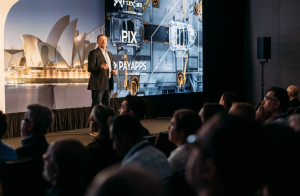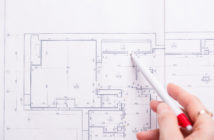
Artificial Intelligence (AI) technologies are disrupting Australia’s construction industry “faster than most of us expected”. In New Zealand, take up of AI technologies in construction is also evident, according to Autodesk’s Jim Lynch who spoke at the Design & Make Summit in Sydney in September. “Many of us thought the future of work would happen, you know . . . in the future.
But then the workplace changed a lot faster than most of us expected. And it’s not done changing. AI has arrived, with implications that are looming large for all of us.”
In New Zealand, the Architecture, Engineering and Construction (AEC) industry is already leveraging the power of AI. Architecture firm Warren and Mahoney adopted Autodesk Revit for their Christchurch Cathedral and central square project.
When a 6.3-magniutude earthquake struck Christchurch near the city’s CBD on February 22, 2011, it caused widespread damage and claimed 185 lives. The damage to the city’s buildings and infrastructure, including the cathedral and central square, was severe, as these structures were already weakened from a 7.1 magnitude earthquake that occurred just five months earlier on September 4, 2010.
Warren and Mahoney partnered with residents and the area’s indigenous population to create a more inclusive design, while preserving historical details.
According to Brad Sara, Principal, Digital Service Lead, Warren and Mahoney, “With the amount of work that we knew we had to do, the partnerships we had to make, we knew we needed to be a 3D-modelling cloud-based company. That meant we made a decision to move to Autodesk Revit.”
“In-depth 3D scans meant that not only could they put each stone back where it should be after it was deconstructed and re-strengthened, but that beautiful moments like the stained glass rose window can actually be rebuilt,” said Sara.
“Everyone being able to contribute their specialty to the project is really, really important. Using loud-based digital platforms like Autodesk Forma and Revit allows for the maximum collaboration, whether they are a designer, the client, or the community,” says Sara.
According to Autodesk’s State of Design & Make 2024 report, which features insights from over 5,000 leaders across all AEC and D&M industries, including 2,000 from the AsiaPacific, 78 percent of respondents believe AI will enhance their industry and are optimistic about where AI is taking us.
“We’ve gone from just sharing files in the cloud to collaborating in the cloud. From seeing data as a problem to be managed, to realising it’s an opportunity to be tapped. And from talking about the promise of AI to making real progress adopting it,” says Lynch.
“In fact, according to the report, 56 percent of companies across the industry are incorporating AI into your businesses right now. Take construction for example. Like many industries at the moment, it’s riddled with challenges. In Australia, those include higher labour costs, the cost of raw materials, a lack of skilled workers, growing competition and economic uncertainty.
“However, we are seeing businesses every day using AI to mitigate some of these challenges. Across the AsiaPacific, construction businesses are adopting AI for predictive insights; to identify opportunities to improve profitability; generative design; and even subcontractor evaluations,” says Lynch.
Lynch went on to say that the AEC industry is doubling down on AI and, as a result, are seeing improved efficiency, cost reductions, an increase in competitive advantage and increased revenue.
“We’ve been making progress too. Autodesk AI is technology we’ve been working on, and investing in, for years.
“It powers our Design & Make platform and our industry clouds Fusion, Forma, and Flow. We’ve been putting AI to work, because we know that it has the transformative power to understand and address the capacity issues we all face. The challenge of doing more with less,” concludes Lynch.



